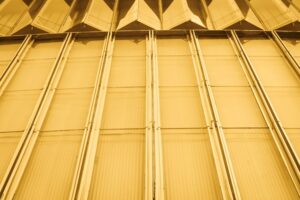Roof battens and purlins are crucial for a building because they support a great deal of weight and are a crucial component of roofing structure. They are extremely versatile and have multipurpose. They can be used for flooring and wall support and offer aesthetic finishes on the window trimmings and door frames. Purlins come in different shapes, sizes, and materials to suit different building needs. In this guide, we will share the details of the necessity of roof battens & purlins in structural engineering, why they are important, and what you should know about them.

The Importance of Roof Battens and Purlins: Know in Details:
The purlins are crucial for the building construction because they offer a base for the roof deck. It helps in the distribution of loads throughout the structure. They can support roofing sheets, insulation, and cladding, all of which fit into the steel beams. They also help lower the truss or rafter span, enabling a longer span and a more open interior. Therefore, roof battens and purlins are a crucial part of a building because they contribute a lot to its stability and rigidity.
The Different Shapes of Roof Battens and Purlins:
The steel purlins are categorized into two types – the C type and the Z type. The C-shaped purlins resemble the letter C, and they are commonly used to support walls and floors. The Z purlins resemble the Z alphabet used at the joists and overlaps. It has high strength. This type of purlin is ideal for supporting the flooring beams because it is made to create the walls and floor joists of a building shell.
The Components of a Secondary Framing Girts and Purlins :
A lot of pre-engineered metal buildings need secondary framing. Purlins and girts are the crucial components of secondary framing. Purlins offer additional support for the roof. The girts provide additional support for the walls. They are designed to transfer the loads from the surface of the building to the mainframe and foundation. Also, it works as the lateral braces for the compression flanges, which are a crucial component of the primary framing. They enhance the capacity of the complete frame.
Purlin Span :
The purlin’s span is the difference between the centres of the cleat bolts at either end. There are different types of spans, such as the single purlin span, double purlin span, and continuous purlin span. Every one of these represents a complete purlin-run system. The web of the purlin is bolted to a cleat or other hard structure for sustaining a single span. The double spans are supported by the ends and in the centre. The continuous spans are supported at either end of the succession of the uniformly spaced intermediate supports.
Purlin Accessories:
The accessories like purlin laps and cleats offer the roof the necessary support while offering the end panels a drip edge with a place to be nailed. The web hole and the bottom flange hole on each end of the purlin lap are fastened with the bolts. The purlin cleats offer a strong, rigid connection between the trusses, rafters, and beams to the wall plates. They are available in single and double cleats.
Purlin Designs:
In the design, purlins carry dead loads, environmental loads, and live loads. Roof battens and purlins must be sufficiently strong in withstanding the loads it will encounter throughout its life. It shouldn’t fall visibly or otherwise make the sheeting look unattractive.
Purlin Installation:
While working off the ground to install purlins, it is crucial to use protective gears. There must not be any body weight applied on purlins, bridging or girts that are not bolted properly. During installation, it is crucial to take care that all the bolts are correct in grade and size and that they are tightened carefully. Since water can accumulate between the tightly packed pieces, the roof purlins should be kept dry when they are stored. This prevents corrosion. If they get wet, they must be separated and stacked in an open configuration to let in air to dry the surface. Oil or grease that sticks to the purlins during shipping or protection will increase the risk of damaging the purlin. Looking at all the facts, it is clear that the purlins are crucial construction material and choosing the right one will be beneficial for the building.
